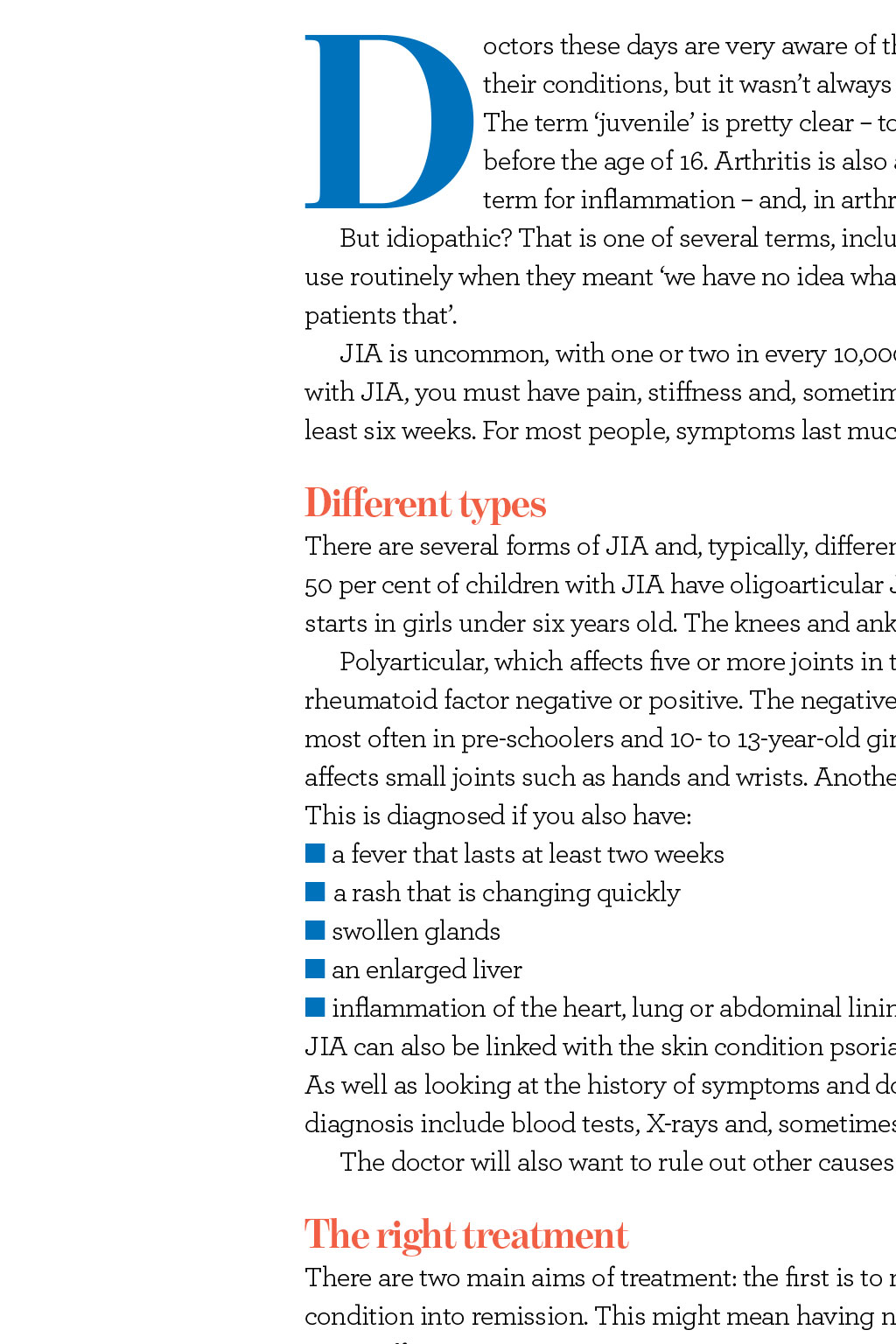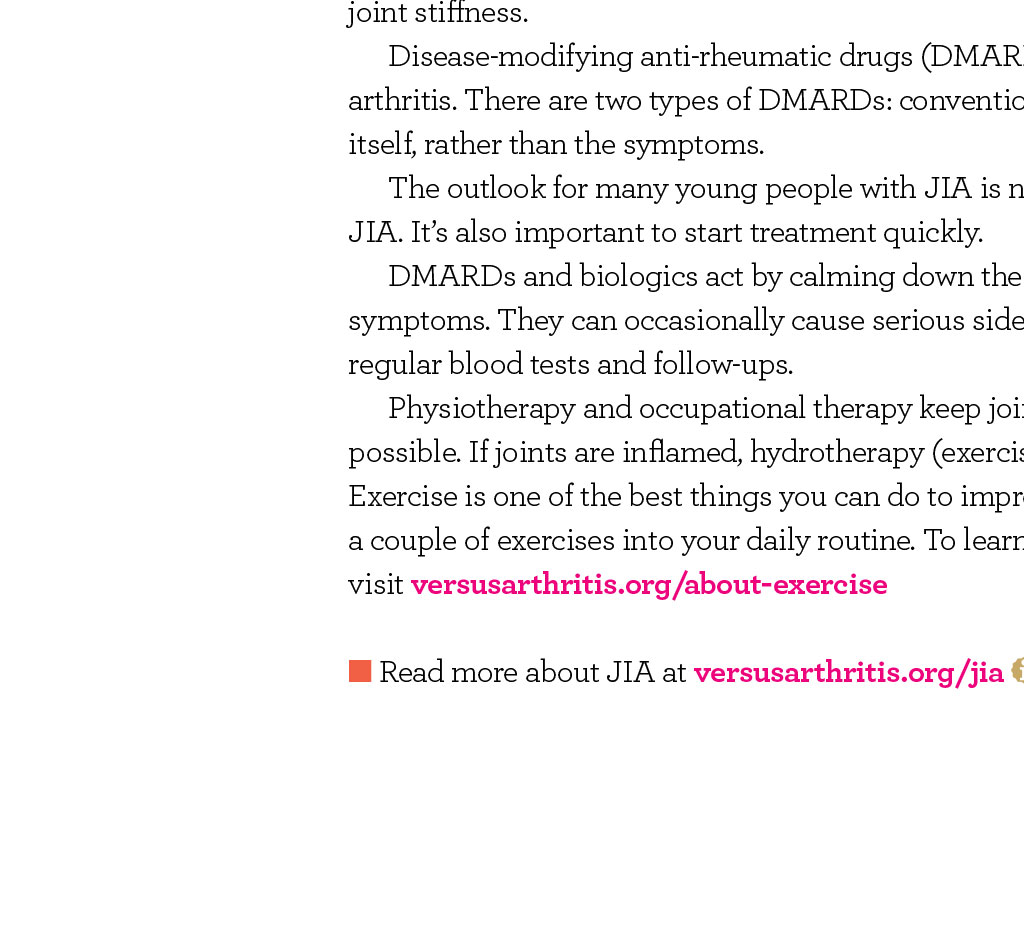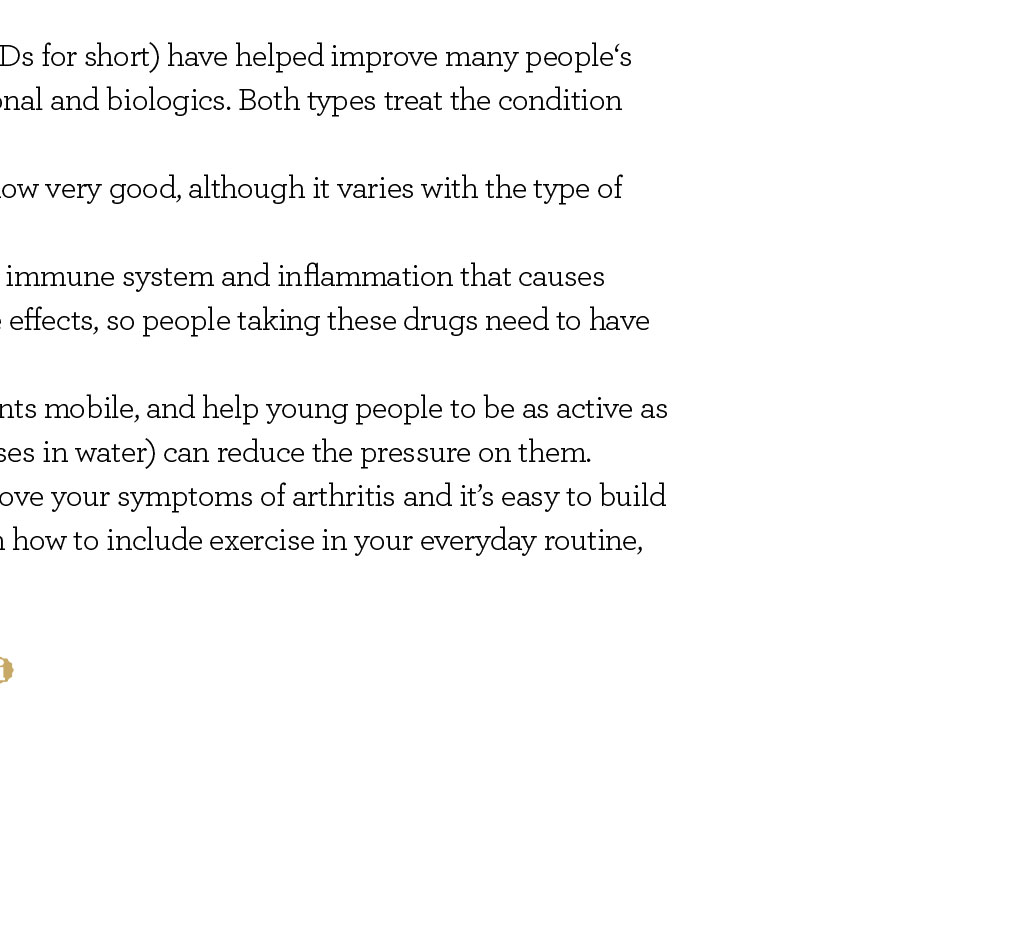












Health JIA All about... Juvenile idiopathic arthritis, or JIA, is a condition that affects children but what is it exactly? WORDS: DR SARAH JARVIS D iSTOCK.COM / KATARZYNABIALASIEWICZ octors these days are very aware of the importance of helping patients understand their conditions, but it wasnt always so. Take juvenile idiopathic arthritis, or JIA. The term juvenile is pretty clear to get a diagnosis of JIA, symptoms have to begin before the age of 16. Arthritis is also a term most people understand; itis is the medical term for inflammation and, in arthritis, it affects your joints. But idiopathic? That is one of several terms, including cryptogenic, that doctors used to use routinely when they meant we have no idea whats causing this, but we dont want to tell our patients that. JIA is uncommon, with one or two in every 10,000 children diagnosed each year. To be diagnosed with JIA, you must have pain, stiffness and, sometimes, inflammation of one or more joints, lasting for at least six weeks. For most people, symptoms last much longer than that. Different types There are several forms of JIA and, typically, different types affect different people. For instance, about 50 per cent of children with JIA have oligoarticular JIA. This type affects one to four joints and mostly starts in girls under six years old. The knees and ankles are most often affected. Polyarticular, which affects five or more joints in the first six months of having the condition, can be rheumatoid factor negative or positive. The negative form accounts for one in four cases, and is seen most often in pre-schoolers and 10- to 13-year-old girls. The positive form is less common and often affects small joints such as hands and wrists. Another one in 10 people with JIA has the systemic type. This is diagnosed if you also have: n a fever that lasts at least two weeks n a rash that is changing quickly n swollen glands n an enlarged liver n inflammation of the heart, lung or abdominal lining JIA can also be linked with the skin condition psoriasis, or inflammation of tendons or ligaments. As well as looking at the history of symptoms and doing a physical examination, tests to help with diagnosis include blood tests, X-rays and, sometimes, ultrasound or MRI scans. The doctor will also want to rule out other causes of joint pain and inflammation, such as infection. The right treatment There are two main aims of treatment: the first is to reduce symptoms and the second is to put the condition into remission. This might mean having no symptoms, or having just the occasional flare of joint stiffness. Disease-modifying anti-rheumatic drugs (DMARDs for short) have helped improve many peoples arthritis. There are two types of DMARDs: conventional and biologics. Both typestreat the condition itself, rather than the symptoms. The outlook for many young people with JIA is now very good, although it varies with the type of JIA. Its also important to start treatment quickly. DMARDs and biologics act by calming down the immune system and inflammation that causes symptoms. They can occasionally cause serious side effects, so people taking these drugs need to have regular blood tests and follow-ups. Physiotherapy and occupational therapy keep joints mobile, and help young people to be as active as possible. If joints are inflamed, hydrotherapy (exercises in water) can reduce the pressure on them. Exercise is one of the best things you can do to improve your symptoms of arthritis and its easy to build a couple of exercises into your daily routine. To learn how to include exercise in your everyday routine, visit versusarthritis.org/about-exercise n Read more about JIA at versusarthritis.org/jia